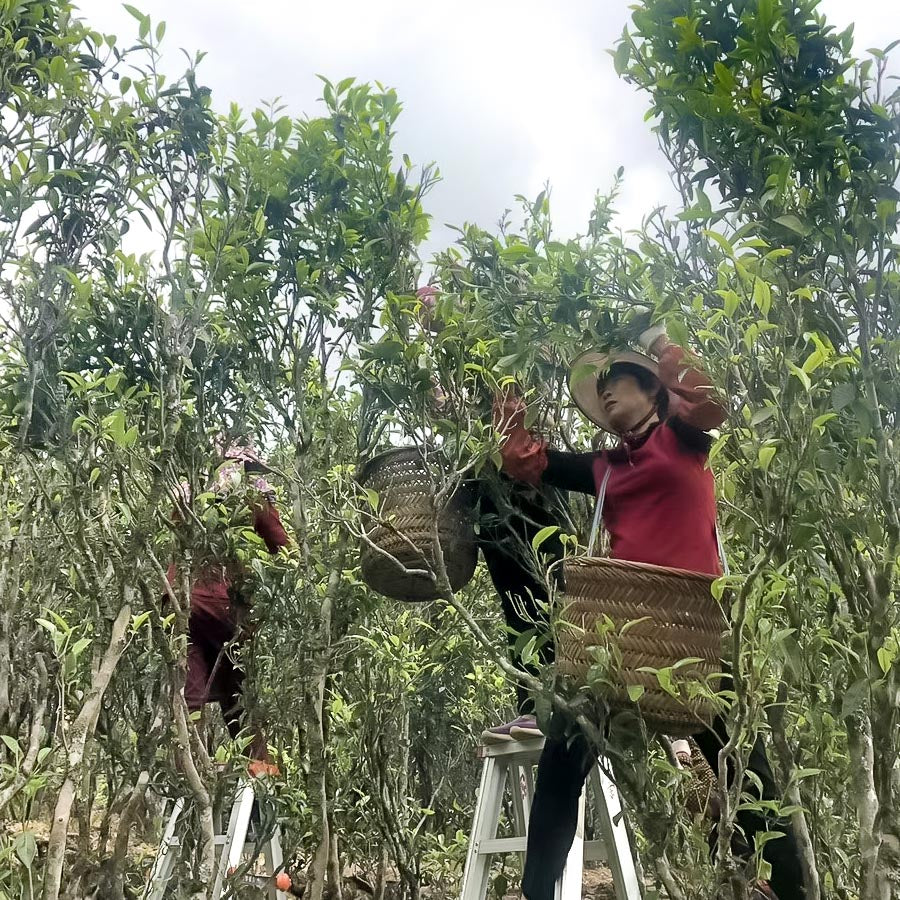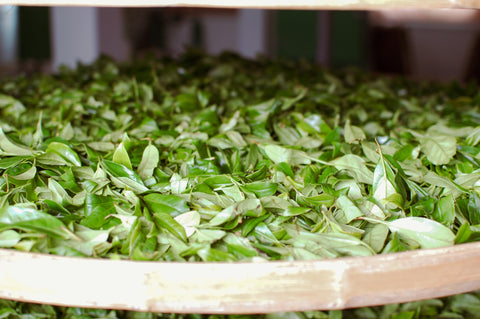Eight Immortals - A rare Dan Cong tea from Phoenix Mountain

While most teas are picked from small bushes, Dan Cong (which translates as single bush or single tree) tea trees can grow to heights of three metres or more, making them far harder to harvest but yield incredibly high quality leaves. The tea is grown on Phoenix Mountain (Guangdong province, China) which is celebrated for its mineral-rich soils, foggy climate and rocky landscape.
One of the most highly prized Dan Cong teas is named after the mythical Eight Immortals. In 1898, a farmer from Li Zi Ping village took a few branches from the Da Wu Ye cultivar tree in the nearby village of Qu Zai Liao. He graft bred the tea trees, but only eight survived. As these trees grew into their own individual shapes, they evoked the image of the Ba Xian Guo Hai (“Eight Immortals Crossing the Sea”), an ancient Daoist parable.
The Eight Immortals represent male, female, old, young, rich, poor, noble and humble and each one carries with them a different, magical treasure.
Set to return by boat from the Queen Mother’s celestial, birthday celebrations, they were confronted by the gigantic, turbulent waves of the East Sea. One by one they each threw their treasures into the water; a gourd, a flower basket, a banana leaf plant, a donkey, a sword, a flute and a Jade plate. Each treasure expanded and the Immortals jumped aboard and began their journey.

On their travels across the sea, they were confronted by two idle and greedy sea princes who, coveting the Immortals treasures, created a giant whirlpool to trap them. The Immortals managed to escape, all except for Lan Caihe, who got sucked down into a Crystal Royal Palace, along with her magical flower basket.
When the Immortals travelled down to rescue her, they were confronted by the princes' father - The Dragon King of the East Sea. The Dragon King sent out his shrimp soldiers and crab generals to attack the Immortals. A great battle ensued but by banding together and with the aid of their magical treasures they were eventually able to defeat the Dragon King, rescue Lan Caihe and bring peace to the ocean.
The story of the 'Eight Immortals Crossing The Sea' is one of China’s most well-known myths. The story is frequently used as a proverb to describe individuals with different abilities collectively working together to reach a common goal.

This particular Eight Immortals tea is from trees that are between 20-30 years old and around three metres in height. The trees are graft bred from the original Eight Immortals mother trees. The tea garden, located near Tian Liao village is 1000m above sea level.
The tea is harvested by hand in early Spring and then goes through the meticulous processing steps of withering, rolling and roasting, overseen by Tea Master Mr Huang.
The finished tea’s quality is highly dependent on the quality of the leaves and how gently they are treated. The picked leaves are spread out on bamboo trays to wither under the sun. Once the leaves are silky and soft, they are moved inside to continue to wither under the shade, where they will decrease in temperature and lose some moisture.

The leaves are then gently shaken to promote cell bruising and encourage fermentation. After four to five shaking (or “Touch the Green”) sessions, the bamboo trays are rolled in a circular motion and shaken up and down so that the leaves knock against each other. The edges of the leaves turn a vivid scarlet colour and give off an intense fragrance. This step is repeated numerous times until the tea leaves are in a perfect condition. Between each shaking session the leaves are set aside to rest, soften and reduce their moisture content. This critical step, which can take all night, will highlight the skill of the tea maker who must decide how soon and how often to shake the tea.

When the tea has reached the optimum level of oxidation, the leaves are stir fried for 15 minutes in hot pans to denature the enzymes, halting the oxidation and enhancing the tea’s fragrance. The tea is then rolled, squeezing out the remaining juices and shaping the leaves into long, thin strips. Finally, the tea is roasted to remove any remaining moisture and to lock in the tea’s fragrance.

TAGS:


